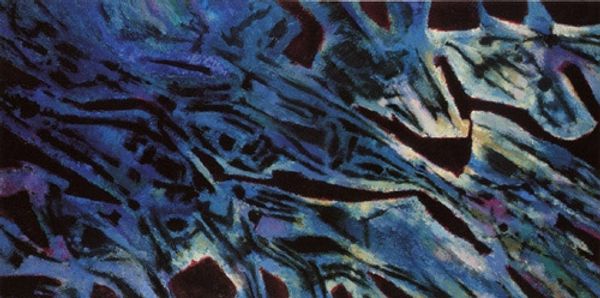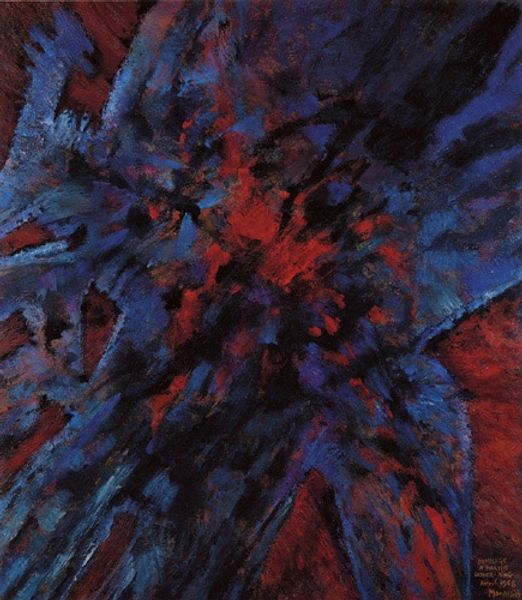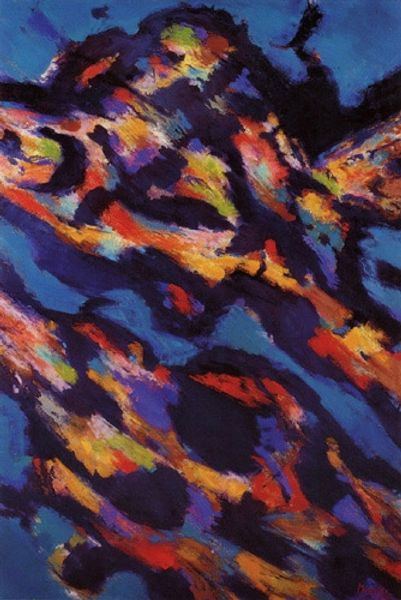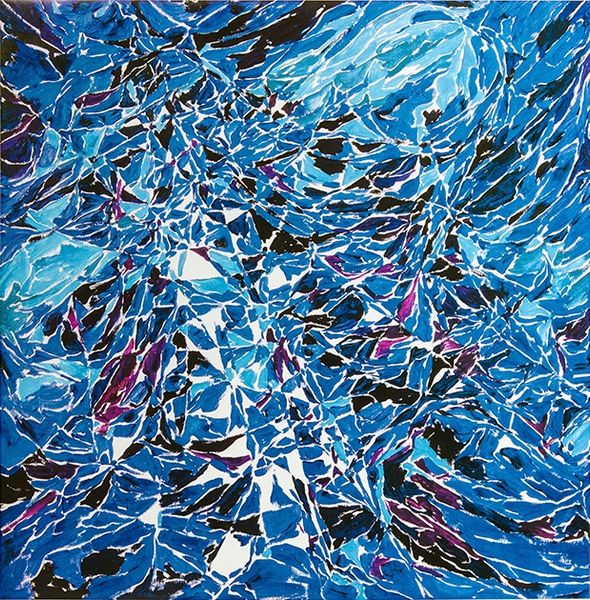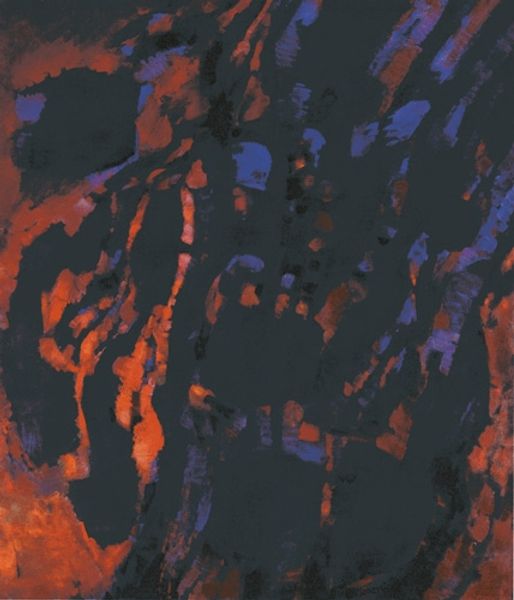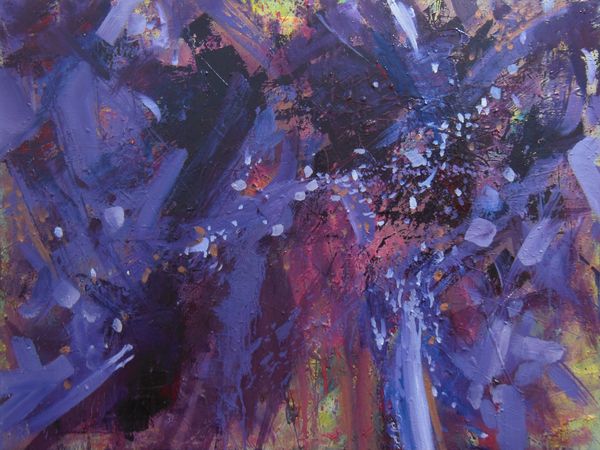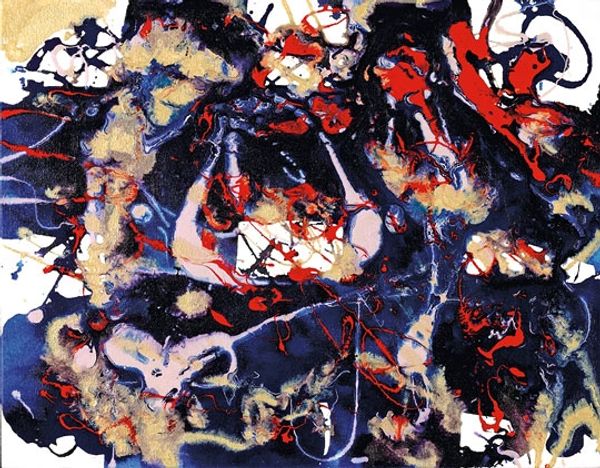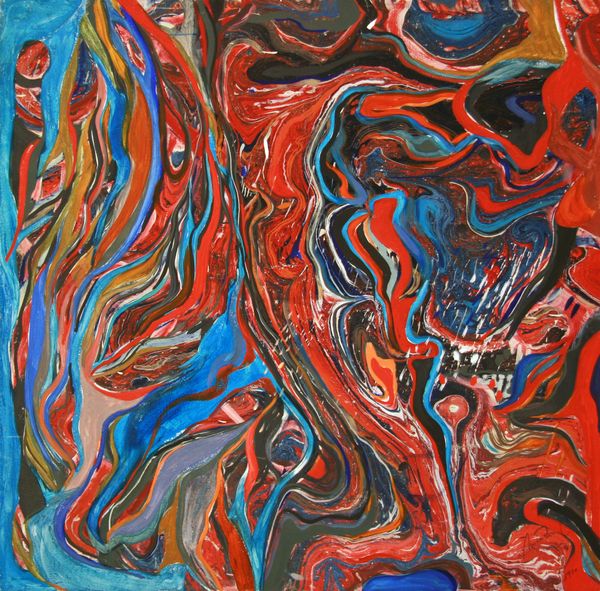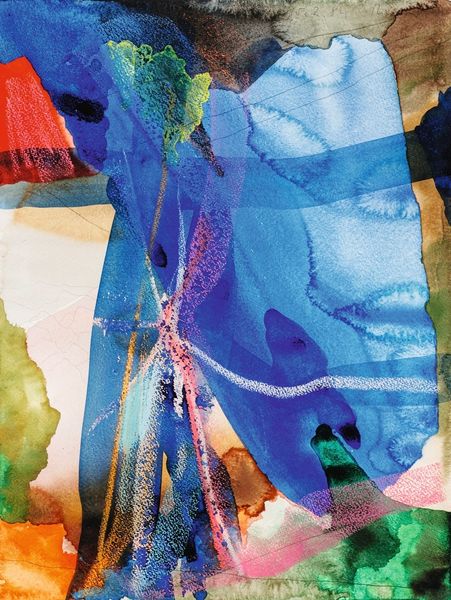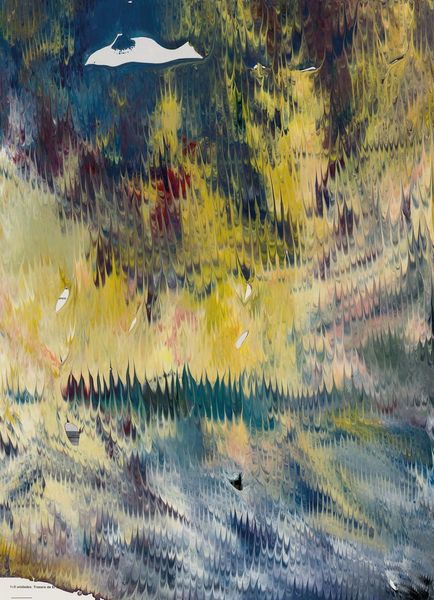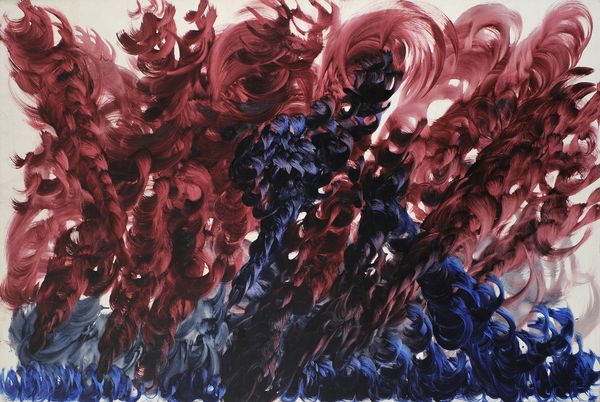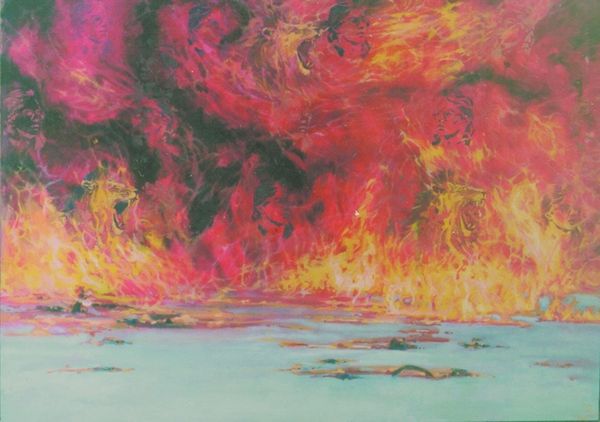
Copyright: Alfred Manessier,Fair Use
Editor: Here we have Alfred Manessier's "Eaux vives," an acrylic on canvas created in 1979. The swirling blues and blacks give me the sense of looking deep into a tumultuous body of water, maybe even from underneath. What strikes you when you see it? Curator: The title "Eaux vives" immediately brings to mind white-water rapids, suggesting dynamic, almost violent energy. I am curious how the painting relates to post-war reconstruction efforts. Does this abstraction of nature reflect a societal need to rebuild and redefine the world around them? The impasto technique—the thick application of paint—suggests a tangible, almost sculptural engagement with materiality, defying the notion of flatness that became so dominant. Editor: That's interesting; I hadn't considered that relationship between material and rebuilding. Do you think his artistic choices speak to a larger trend? Curator: Absolutely. There’s a visible shift in artistic patronage after World War II, influencing both style and subject. Abstract Expressionism became a symbol of freedom and individualism, and this work echoes those sentiments, doesn't it? How might the institutional embrace of Abstract Expressionism served broader political aims during the Cold War? Editor: I never thought about the Cold War influence here! I came into this just seeing blue, but you've really made me think about what this meant culturally, not just visually. Curator: And I am struck how his use of layering creates depth and movement that pulls viewers. Perhaps this movement provides an escape that allows for new interpretations each time we encounter the work.
Comments
No comments
Be the first to comment and join the conversation on the ultimate creative platform.
